Chimney for a gas water heater
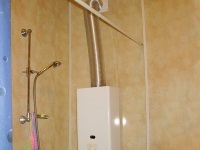
The most optimal choice for getting hot water in the house or apartment is called a gas column. But one of the conditions of installation of most models of such equipment is the need for a chimney. Therefore, thinking about the purchase of the speaker, the user should learn more about the rules of installation of chimneys, as well as possible alternatives to this type of removal of combustion products.
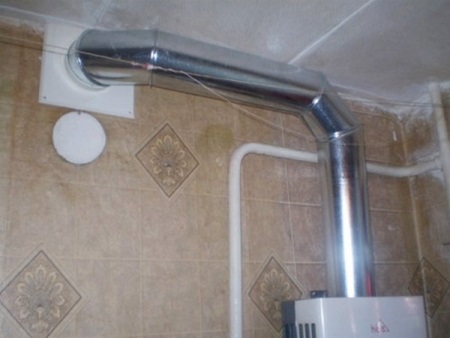
Types
Chimneys for gas heaters are classified according to the material from which they are made. Distinguish:
- Corrugated flexible ducts. Inside such pipes there is a wire spiral, and the pipe itself is made of aluminum foil. The advantage of such a chimney is the possibility of bending at any angle and changing the length with the help of metal tape.
- Aluminum chimneys. Their advantages are low weight, availability, lack of condensation inside the chimney. However, in winter, without insulation, such pipes can become icy.
- Chimneys made of galvanized steel. They have a small weight and fairly high resistance to corrosion. Steel chimney is also important to insulate for the cold season.
- Sandwich chimneys. Their design is one pipe located inside the second, and between their walls is a non-combustible insulator (often mineral wool) to prevent condensation. Such a chimney is called durable and reliable. It is often recommended for installation in a private home, when the chimney needs to pass through the roof and floors (especially if they are made of combustible materials).
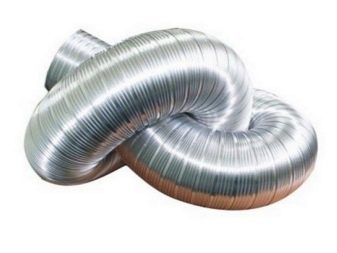
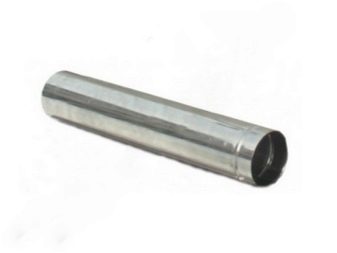
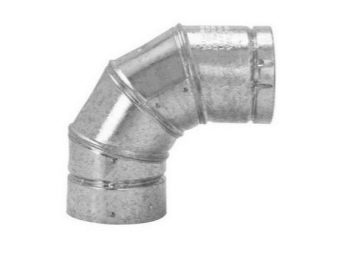
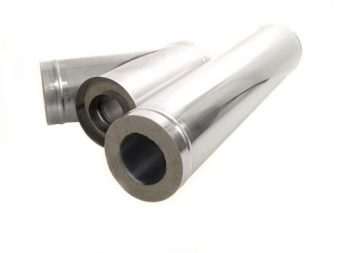
Coaxial chimney for a gas boiler
This is a modern and quite popular nowadays version of the chimney, which is used for turbine boilers, characterized by the presence of a closed combustion chamber. Its design is represented by a pipe in a pipe, and the central pipe takes the smoke out of the speaker, and through the gap between the outer and inner pipe in the combustion chamber of the apparatus fresh air from the street enters.
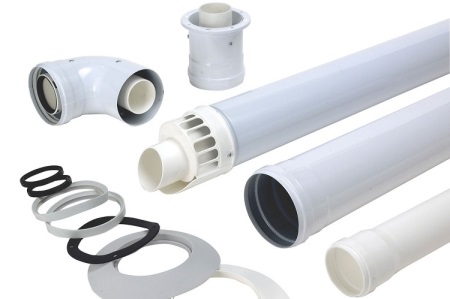
Such a design allows you to make the chimney a shorter length and increase the efficiency of the device. In addition, the speaker with this option of the chimney will not burn oxygen in the air of the room, which usually happens with an open combustion chamber. Stopping the choice on the turbine speaker, you do not need to worry about sufficient ventilation of the room, but it is important to pay attention to the choice of the chimney diameter. It is necessary that its diameter was not less than the outlet pipe of the heater.
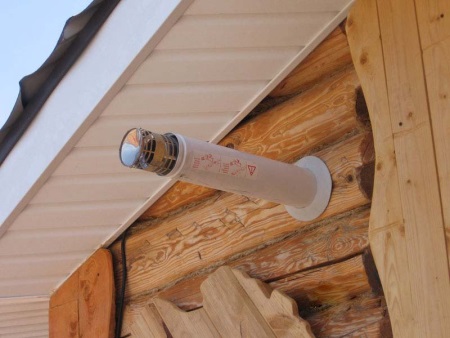
What should be the diameter of the chimney?
The selection of the diameter is based on the performance of the heater, that is, based on its capacity. Almost all heaters used in the households need a pipe diameter of 11 or 13 cm. In this case for devices with power up to 20 kW, providing water to one point, usually choose a pipe with a diameter of 110 mm, and for the speaker with a capacity of more than 21 kW, from which the water is taken to 2-3 taps, requires a pipe diameter of 130 mm.
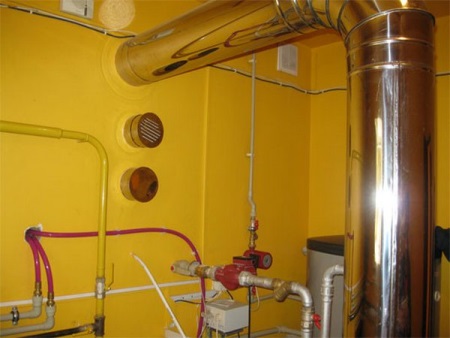
Features for installation in an apartment
To connect a standard gas water heater in a city apartment, the house must have a fixed duct for smoke extraction. In most modern buildings, such ventilation ducts are laid in the walls, so it is not a problem to bring a chimney from the column to them. However, many buildings of the last century do not have such channels, so you can not install an ordinary column in them. In this case, you can opt for a turbine model.
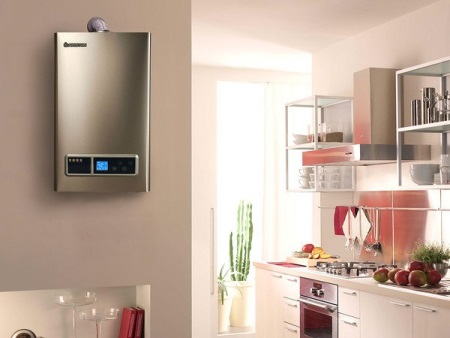
Other features of chimney installation in apartments are such nuances:
- The chimney inside should be smooth and without any constrictions.
- Most often it is installed vertically. Allowed no more than 3 bends.
- The pipe must be well sealed to avoid the penetration of combustion products into the living space.
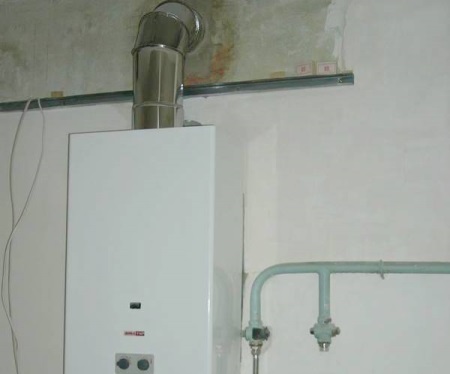
As for the choice of pipe material, corrugated aluminum, despite its simplicity and cheapness, is called an unsuitable option. These pipes burn rather quickly, so they are recommended only for infrequent use of the heater. For installation in the apartment is more preferable chimney made of steel.
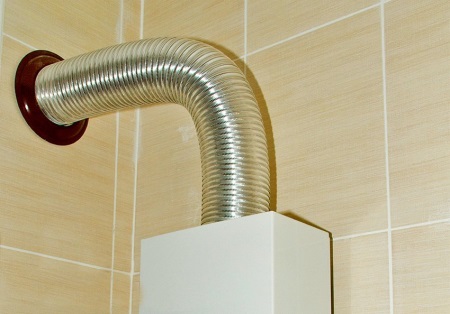
Features for installation in a private home
If you think about the chimney at the stage of construction of the building, the best choice will be the arrangement of a vertical brick shaft, inside which a steel or asbestos pipe can be located. At the same time, it is important that the gas boiler and the heating system have different shafts for smoke extraction.
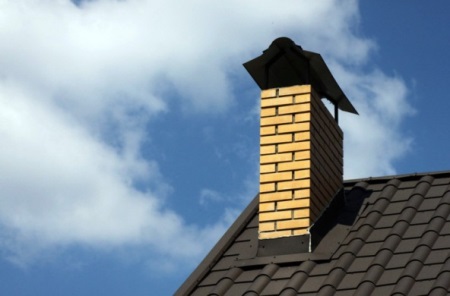
If the building is already built, the most suitable option for the chimney - insulated steel pipe. It can both be attached to one of the exterior walls, and installed inside the building through its ceilings and roof.
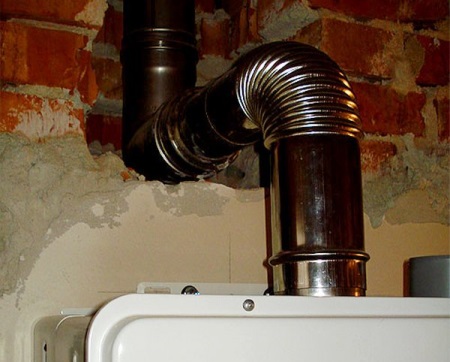
Other nuances of installing a chimney in the house are the following:
- The material and design of the chimney, as well as the place of installation must comply with current regulations.
- To the chimney must be provided with easy access, so that if necessary you can quickly fix possible problems.
- Mounting the chimney in the house vertically, it is important not to allow significant deviation pipe - it throughout the construction should not deviate more than 1 meter.
- The end of the chimney should protrude above the roof at least 40-50 cm.
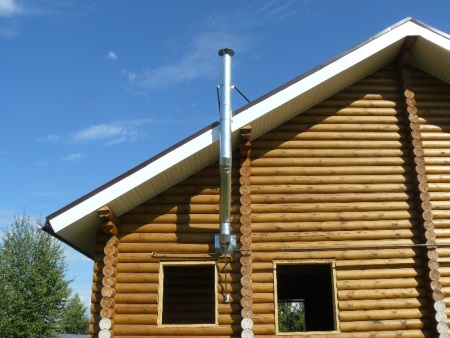
Installation steps
Installation of the chimney when installing a gas boiler includes the following steps:
- Assessing the conditions for installation work.
- Selection of a suitable chimney option.
- Installation of the chimney section at the point of its connection to the gas heater.
- Installation of the chimney inside the house or on the outside wall (for installation in a private home).
- Conclusion of the pipe through the hole to the outside (if mounted coaxial chimney).
- Checking the draught.
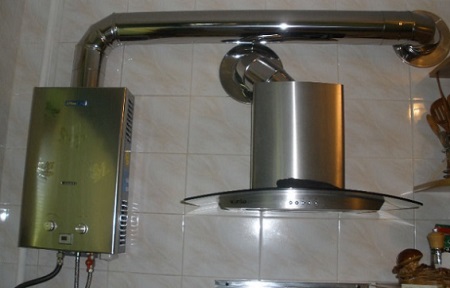
When a chimney is not necessary: chimneyless boilers
These days, due to the proliferation of turbine boilers, these devices are called chimneyless, because they do not need a special chimney, and their coaxial chimney is led through the wall. However, there are also columns that output combustion products into the room in which they are installed. As a rule, these are low-power models with low capacity. An example of such a column is the Neva 3001, the capacity of which is 9 kW, and the output is only 2.6 liters per minute.
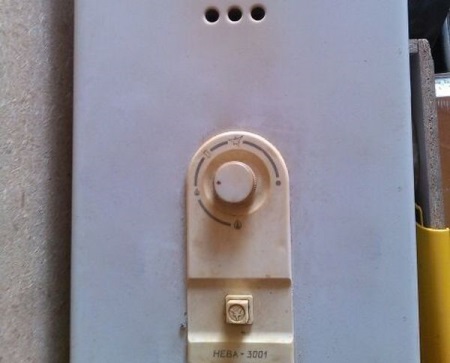
Good ventilation of the room is very important for the installation of such a column, but even in this case there is a risk of carbon monoxide poisoning, because it is odorless and affects people when they are not even aware of the deadly danger. That is why the smokeless speaker loses out to the turbine and has hardly been used recently.




